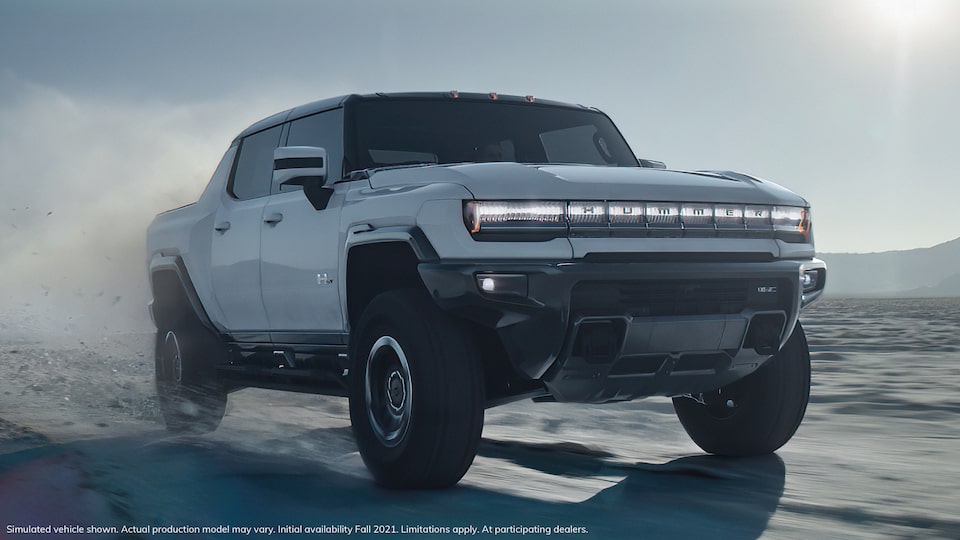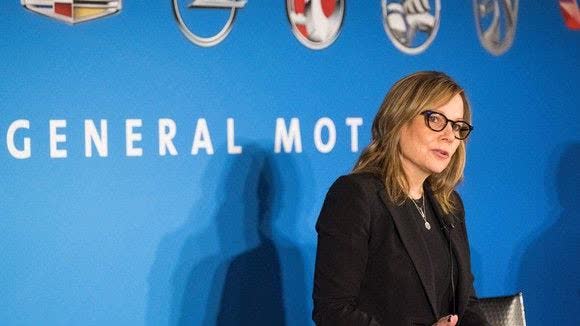
Summary
- GM’s plan envisions 30 EV models and an end to sales of gasoline and diesel-powered engines, along with company-wide carbon neutrality by 2040.
- The automaker noted that regulations, infrastructure, and “other factors” would have to take place for the plan to be accomplished.
- GM has not achieved commercial success selling EVs and relies disproportionately on large gas-powered pickups and their variants for financial stability.
- Shares have benefited from a rally that suggests investor approval of GM’s electrification ambitions as well as an appreciation for the positive impact of rising vehicle demand in a post-pandemic economic recovery.
- Looking for a helping hand in the market? Members of Auto/Mobility Investors get exclusive ideas and guidance to navigate any climate. Get started today »
In the stock market and in Washington – as well as other global capitals – a consensus is building that the age of the battery-powered electric vehicle (BEV) is unfolding – unstoppably – before us. Accordingly, General Motors Co. (NYSE:GM) is stepping up the tone and specificity of its forecasts and pronouncements with regard to new EV models, the timetable for their appearance and the dominant role they will play in GM’s business model.
The most important predicate for this technological sea change in personal transportation is global worry about climate change, and the hypothesis that eliminating CO2 emissions from tailpipes constitutes a vital step in halting and possibly reversing the warming of the earth’s atmosphere. Longer-term, most automakers fully concede that electric propulsion confers technological advantages, such providing provide ample power for a vehicle’s computer-driven features.
From carbon to electrons
A transition from fossil fuels to electricity facing GM and other automakers looks very much like the type of sea change that faced Kodak during the early days of digital photography. Kodak, which was heavily invested in photographic film, saw the future and flinched; its failure to transition to a new and disruptive technology is taught widely as a textbook example of the innovator’s dilemma: whether and how to risk solvency on an uncertain future. Mainframe computers, fixed-line telephony, integrated steel mills, department stores further exemplify how, to paraphrase Peter Drucker, nothing fails like success.
EV tech plays a miniscule role in mobility for the moment; it continues to improve in the key categories of driving range between charges, charging time and affordability. The number of charging stations, while relatively small compared to gasoline fueling stations, is growing. Yet there is little evidence that a large numbers U.S. consumers are clamoring to replace their gasoline and diesel-powered vehicles with BEVs.
This dearth of broad consumer demand for EVs is especially fraught since, among the global automakers, GM’s No. 1 profit maker by a large margin is the full-sized gasoline-powered pickup truck (Chevy Silverado and GMC Sierra) and its SUV variants (Suburban, Tahoe, Yukon etc.).
Flexible architectures
GM is developing two basic EV platforms, one for cars and a second for pickups, which the automaker says are exceptionally adaptable to almost any sort of vehicle, from the smallest compact sedan to the largest pickup and everything in between. The automaker also is building a $2.3 billion plant to manufacture Ultium vehicle batteries with South Korea’s LG Chem in Lordstown, Ohio.
All of which raises logical questions for investors: How will GM motivate consumers to buy its BEVs, given the 2035 target date for its plan to stop selling gasoline vehicles? Will government and electric utilities play a role in creating incentives and building out the electric charging infrastructure and providing the power? What happens to GM’s business if consumers prove resistant to an EV future or government drops the ball?
A reading of the fine print in EM’s EV manifesto is called for. Mary Barra, GM CEO, has said the 2035 target date is “aspirational,” a word that hasn’t attracted much media attention and is quite different than a firm promise. There’s no reason to believe GM isn’t perfectly serious in its intention to phase out its gasoline fleet by that date – however, achieving the goal will rest in large part on factors outside of GM’s control, such as U.S. government policy with regard to electricity generation and creation of a charging infrastructure.
Pro-EV Joe
The election of Joe Biden was a big step toward electrification. In all likelihood, the government initially will have to create incentives for the manufacture and sale of BEVs – and disincentives for the sale of gasoline cars and trucks. What would these incentives look like and, more importantly, how much will they cost? A $7,500 tax credit – such as that currently granted BEV buyers – would cost the government $112.5 billion annually (roughly 15 million vehicles sold annually X $7,500).
Another strategy would be for the U.S. to emulate European Union by invoking a penalty on automakers for tailpipe emissions so punitive that none could keep manufacturing internal combustion engines (ICE) and hope to stay in business. The Biden administration has already promised to convert the government fleet to BEVs and to finance new charging stations.
“The (Biden) plan to deploy 500,000 chargers represents at least a five-fold increase in the nation’s existing infrastructure (according to the DOE, there are currently around 90,000 individual chargers at 28,000 charging stations, including some 908 Tesla Supercharger stations). According to calculations by BloombergNEF, Biden’s plan will probably cost north of $5 billion, and will provide roughly 57% of the country’s charging needs by 2030. The massive infrastructure upgrade could spark the sale of as many as 25 million electric vehicles,” according to InsideEVs.com.
One serious drawback for the present state of EV tech is the degradation of their performance in the cold. As my friend and journalistic colleague John McElroy reported a few weeks ago in Wards Auto, “EVs Don’t Like Winter Weather.” In a test drive of the new Ford Mustang Mach-E EV, McElroy noted that the EPA’s official range designation between charges for the model is 270 miles – not astounding but not bad either. But when McElroy fully charged the Mustang’s battery at 33 degrees F. the range registered 175 miles. The industry is working on cold-industry range degradation – but it remains an obstacle to consideration for those consumers who don’t live in the Sunbelt.
As EVs become more prominent, GM can ill afford to give up the cash and profit generated by its large pickup truck business, which is why one of the first of GM’s new EV models will be the GMC Hummer EV, a high-end SUV whose architecture can easily be adapted into a Chevrolet Silverado EV, for example, or a GMC Yukon SUV. HummerEV will be a high-price model sold in low volume and meant to showcase the abilities of an electric truck. A Silverado EV must be affordable to carpenters, ranchers and plumbers.

GMC Hummer EV
Source: GM
GM will have its work cut out persuading a new generation of pickup and large SUV buyers to switch from gasoline to electricity – it will take brilliant marketing, an expertise for which GM isn’t particularly well known. In advance of this year’s Super Bowl, GM hired comedic actor Will Ferrell in the creation of three teaser videos to GM’s Super Bowl ad. In the videos Ferrell “hates” on Norway because it is more advanced relative to the U.S. in the adoption of EV technology.
Beyond the consumer and marketing angle is the Wall Street angle. When comparing sales and profit, GM’s performance far surpasses Tesla, a much glitzier brand and a company worth more than ten times that of GM, in terms of market capitalization. GM’s relative difficulty raising capital compared with Tesla must be seen a serious long-term handicap for a player in the capital-intensive automotive business. Part of GM’s decision to reframe its reality around EVs is a bid to attract investors who have shown with their Tesla-love that they believe EVs are the future of the mobility industry.

GM CEO Mary Barra
Source: GM
Barra has shown courage and toughness in cutting costs, instilling a sense of urgency and paring away GM operations that don’t pull their weight. She and her management team must display keen execution in transitioning from fossil fuels over the next decade. GM will require constant help from the U.S., which can incentivize the replacement of internal combustion engines with EVs if the political will proves strong enough. Prospective owners and current holders of GM stock must calculate whether GM’s management has what it takes – and whether Washington has the wherewithal to make battery-powered mobility more than an aspiration.
Check Auto/Mobility Investors and my regular reports to stay abreast of EVs.






